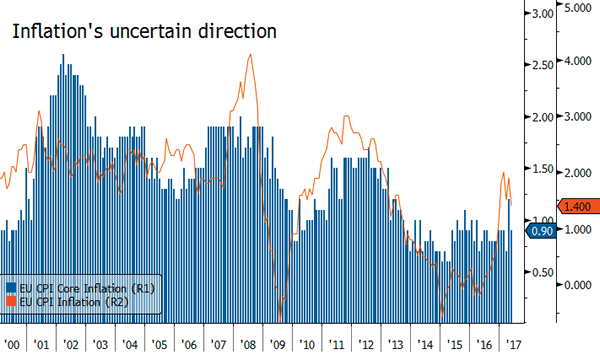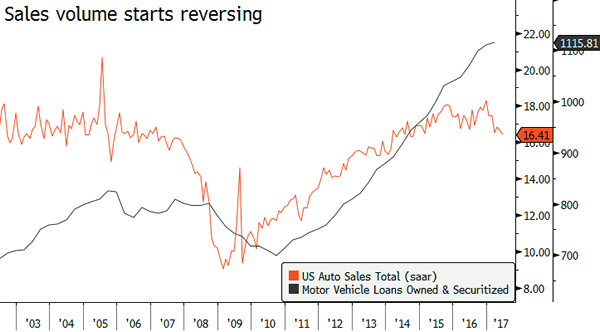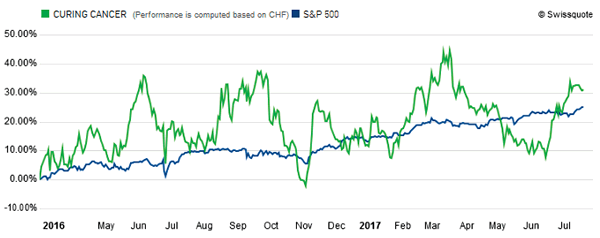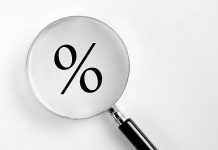- Draghi Backs Away From Reflation Story – Peter Rosenstreich
- US Dollar Set To Weaken Again – Yann Quelenn
- Dark Clouds Ahead For US Car Traditional Industry – Arnaud Masset
- Curing Cancer
Economics – Draghi Backs Away From Reflation Story
With the summer trading fully upon us we don’t expect any single driver to get to far ahead. This includes the central bank "normalization" theme. The ECB vs. Fed divergent normalization policy trade has already run a far distance, increasing the likelihood of a USD bullish correction. Weakness in the US economic backdrop and lingering reputation for the economic data to underperform the Fed own forecasts has prompted traders to push out the next Fed rate hike. Expectations for a December interest rate increased has gone from 55% to 35% in a few weeks while since April the USD has lost nearly 9.5% against the Euro. Yet beyond speculation, Europe data and the ECB have not provided a convincing argument that tighten will occur at any quicker pace.
Last Thursday ECB meeting was a tame event providing limited new information. The ECB held operations unchanged while not proving any real insight when tapering of asset purchases would begin. Draghi stated that no precise date was given to ending asset purchased, going further communicating that discussion would take place in the autumn. Draghi sounded dovish stating that inflation "is not where we want it to be". Taking a clear step back from Sintra speech which highlighted the reflation story. He also mention that exchange rate has gathered some attention and would effect decisions on formulating policy.
The steady appreciation of the EUR and increase in bund yields recently is a likely a worry for the central bank. Draghi is clearly interested in avoiding aggravating the ensuing tightening of financial conditions and slowing inflation further. Draghi saying vaguely that "autumn" would be appropriate for discussion on exit he limited expectations for the Jackson Hole confidence. Overall we suspect that the ECB will use the September meeting to set the stage for an October announcement.
This strategic delay should allow a level of uncertainty to creep in and bullish EURUSD momentum to subside. Especially since Fed 16th September meeting is highly likely to bring a critical announcement on re-balancing. The US incoming data continue to indicate solid activity and solid labor markets with inflation rebounding. Supporting the theory of an earlier then expected Fed announcement (26th July meeting). We see EURUSD key resistance at 1.1716 to cap current bullish extension with a likely downside correction on fundamentals factors.

Economics – US Dollar Set To Weaken Again
Last week, at the Fed’s semi-annual monetary policy, Janet Yellen admitted that stocks markets are overheated. She declared that there are strong "valuation pressures" across a range of assets. Despite that, Fed Chair Yellen appeared… dovish while markets were expecting hints about further rate hike before year-end. It is ironic as over the last eight years, during the zero-interest rate policy time, the US central bank boosted stocks higher through liquidity and strong verbal interventions.
We now believe that the Fed wants to leave inflation running. To do so, the Fed won’t drain liquidity from its balance sheet and rates are not going to be increased above 2%. Yellen and the Fed knows anyway that increasing rates above 2% would likely trigger a massive recession as the US debt is too massive and the service of the debt would not be sustainable. We strongly believe in this hypothesis knowing the level of indebtness of the North-American country. A snowball effect could be disastrous.
The normalization of the monetary policy is definitely going to take longer. The dilemma is getting worse for US policymakers. The stock bubble is underpinned by the Fed monetary policy but increasing rates would trigger a recession.
Next Thursday, the US rates are then not going to be increased and we consider that the US central bank wants to kill its debt through inflation. The greenback should further weaken against the single currency and reaching $1.17 for 1 euro definitely represents a short-term target. The greenback is getting weaker against major G10 currencies and the euro dollar is now trading at levels unseen since May 2016. The bullish trend seems very deep.
For the time being, we still consider that the true state of the US economy is overestimated. Economic fundamentals are mixed. Import prices for June have been released and have declined by 0.2%. In May imports price already declined by 0.3% m/m. Excluding Oil, import prices have slightly increased. On top of that, the US CPI recoded four successive declining monthly print. The Fed target seems less and less attainable in a reasonable timeframe. As a result, we firmly believe that reloading bearish positions on the dollar is a good bet within the next few months. There is no evidence at the moment that the greenback will strengthen in the medium run.
Economics – Dark Clouds Ahead For US Car Traditional Industry
Over the last few years, the pace of new car selling went through the roof in the US, fuelled by subprime loan. The shares of car manufacturers enjoyed a decent ride as low income borrowers were given the opportunity to acquire a brand new car despite weak financial means.
First have a look at the recent development in the secondary market. The average transaction price of pre-owned cars rose to $19.2k dollar in the first quarter of 2017 compared to $18.8k a year earlier, which may suggest that the demand is solid and that the second-hand market still has beautiful days ahead. However, do not get misled, this increase comes essentially from rising MSRP (Manufacturer’s Suggested Retail Price) and the effect of a persistent decrease in the average age of pre-owned cars. Indeed, the average age of a retail used vehicle was 4.4 years in the first quarter, compared to 4.5 years twelve months ago, while the average initial MSRP rose to $34.2k from $32.9k.Taken together, these developments result into a consistently widening spread between MSRP and retained value of pre-owned cars. In other words, owners of a new car have to take a bigger hit when they are selling their asset on the secondary market. This trend should even accelerate in the future amid rising supply of second-hand vehicles in the market, reducing substantially the incentive to buy a new car as cheaper alternatives are available in the pre-owned market.
Unfortunately this phenomena is definitely not about to reverse as the US auto market is facing a new crisis. The auto loan market – and more specifically subprime loans – has come under the spotlight recently amid surging default rate. Indeed, similarly to what happened during the US housing market a decade ago – when lenders didn’t even care about verifying incomes or job histories of borrowers – the history repeats itself but this time with the auto industry. Low income borrowers were able to drive new cars but were charged high interest rate, making the investment very interesting, especially against the backdrop of ultra-low interest rates.
As expected, low income borrowers cannot afford such a drain on the long-term and therefore default on the loan and trigger the usual mechanism: the lender seize the car and tries to sell it on the secondary market, thus inflating the supply of pre-owned car. Without going too much into the details, the bottom line is that after years with record sales volumes, the US auto industry is ahead of years of low entries. The top brands in market share in the US will inevitably take a hit. Ford, Toyota, Honda, Nissan and General Motors are the first in line. Therefore it is likely that the price of those companies will sooner or later start moving south as sales volumes shrink.

Themes Trading – Curing Cancer
According to cancer.org, it is estimated that 21.7 million new cases of cancer will be diagnosed in 2030. Thirteen million cancer deaths are forecast that same year. And with new lifestyles already suspected to increase cancer risk, these figures are likely to be underestimated. As a result, there are important discoveries to be made, and many companies – including start-ups – are investing time and money to find treatments.
Of course, finding a cure for cancer takes time, dedication and knowledge. Today’s investment is tomorrow’s cure. It is also difficult to know just what research is being done: findings often appear in confidential reviews. We have therefore selected 12 stocks where research and development is focused on a wide range of medications. Our main diversification is between start-ups and revenue-generating companies.
We have selected five recent start-ups that completed IPOs in 2015 but have yet to release any products. These companies are candidates to become future pharmaceutical blue chips. Beigene and Syndax are focusing their research on developing cancer treatment drugs, while Edita












